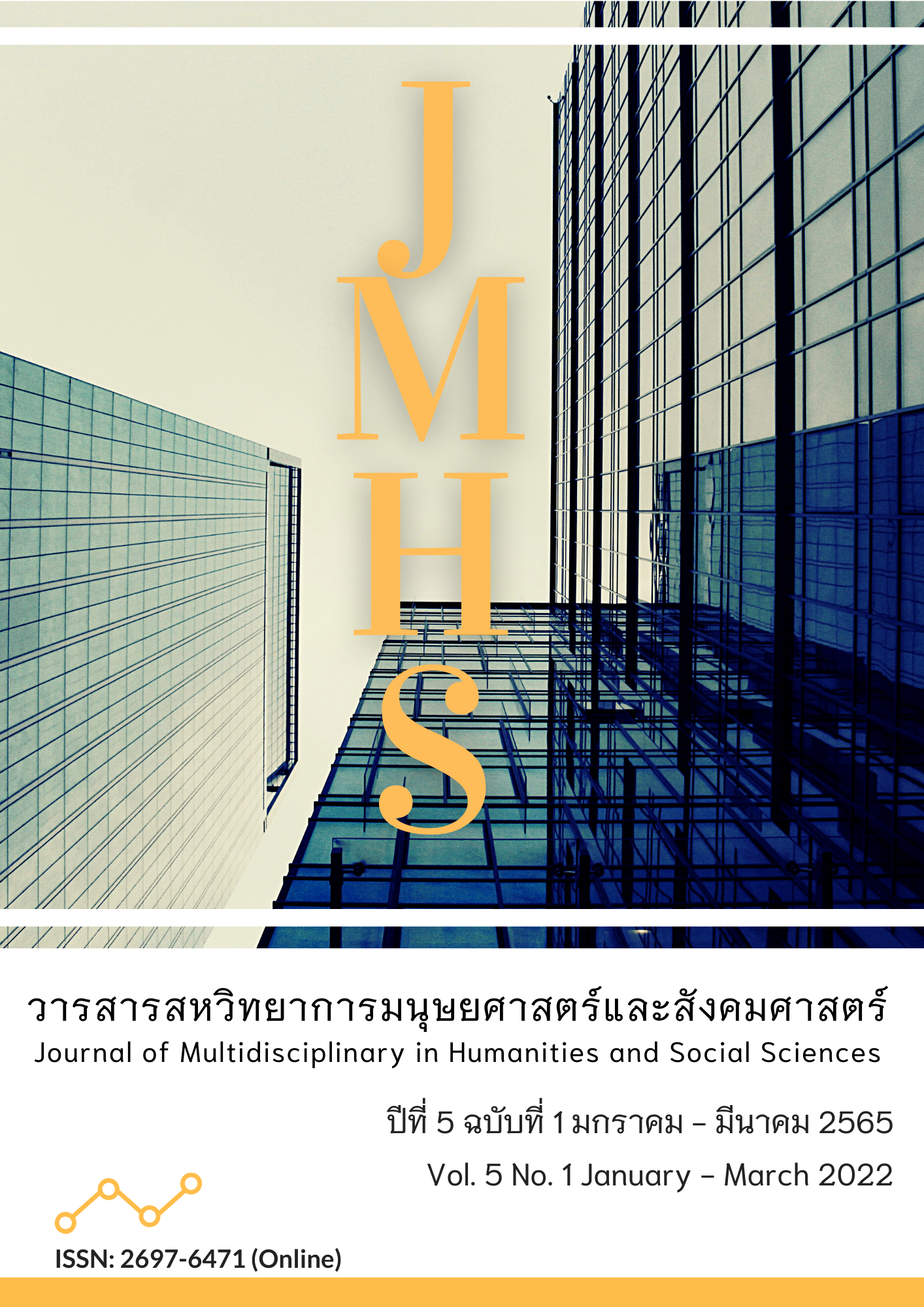A Study of Vipassana Meditation Practice in Khetta Sutta
Main Article Content
Abstract
The objectives of this article were 1) to study content and important dharma principles in the Tasutta region; and 2) to study the dharma principles related to Vipassana meditation practice in the Tasutta area by studying the information from Theravada Buddhist scriptures, namely the Tripitaka Commentaries, and then compiling them descriptively. It was found that the Khet Sutra is a sutra on good Nadina, A good field is like a person with 8 Dharma, a bad field is like a person with Dharma 8. The Sutra gives the practitioner the Eightfold Path, or the Noble Truth, and the practitioner should refrain from the Eightfold Path, that is, the practitioner should refrain from wrong views, refrain from wrong thoughts, refrain from wrong negotiations, refrain from wrongdoing, refrain from committing wrongdoing. and wrong livelihood, refraining from wrong efforts, refraining from wrong recollection, refraining from wrong concentration. The Noble Eightfold Path, or Noble Truth, and a person who practices the Dharma should refrain from the bad field, the Eightfold Path, in order to achieve the success of introspection, which is the Path Fruit of Nirvana, as a result of the correct approach, Virtue Concentration. Wisdom manifests itself as a state of consciousness, that is, the natural state that is enlightened as it really is, known as knowing the Noble Truth of Suffering, the Path of Suffering, the nature of knowing the natural state of all dharmas, the trinity, and eliminating the darkness, that is, ignorance, which is the same as Darkness vanishes, while at the same time transcendence is the awakening of ignorance, just as when there is light, darkness fades.
Article Details

This work is licensed under a Creative Commons Attribution-NonCommercial-NoDerivatives 4.0 International License.
Views and opinions appearing in the Journal it is the responsibility of the author of the article, and does not constitute the view and responsibility of the editorial team.
References
พระธรรมกิตติวงศ์ (ทองดี สุรเตโช). (2551). พจนานุกรมเพื่อการศึกษาพุทธศาสน์ คำวัด. กรุงเทพฯ: สถาบันบันลือธรรม.
พระธรรมธีรราชมหามุนี (โชดก ญาณสิทฺธิ). (2550). คู่มือสอบอารมณ์กรรมฐาน. (พิมพ์ครั้งที่ 5). กรุงเทพฯ: โรงพิมพ์มหาจุฬาลงกรณราชวิทยาลัย.
พระพรหมคุณาภรณ์ (ป.อ. ปยุตฺโต). (2548). พจนานุกรมพุทธศาสตร์ ฉบับประมวลธรรม. (พิมพ์ครั้งที่ 10). กรุงเทพฯ: เอส.อาร์.พริ้นติ้ง แมส โปรดักส์.
พระพรหมคุณาภรณ์ (ป.อ. ปยุตฺโต). (2555). พุทธธรรม ฉบับปรับปรุงและขยายความ. (พิมพ์ครั้งที่ 32), กรุงเทพฯ: ผลิธัมม์.
พระภาวนาวิริยคุณ (เผด็จ ทตฺตชีโว). (2555). มรรคมีองค์ 8 เส้นทางครูแท้. (พิมพ์ครั้งที่ 3). กรุงเทพฯ: เอส.เอ็มเค. พริ้นติ้ง.
พระโสภณมหาเถระ (มหาสีสยาดอ). (2549). มหาสติปัฏฐานสูตร ทางสู่พระนิพพาน. (พระคันธสาราภิวงศ์, แปล). กรุงเทพฯ: ไทยรายวันการพิมพ์.
พระอุดรคณาธิการ (ชวินทร์ สระคำ) และ จำลอง สารพัดนึก. (2552). พจนานุกรม บาลี-ไทย สำหรับนักศึกษา ฉบับปรับปรุงใหม่. (พิมพ์ครั้งที่ 6). กรุงเทพฯ: ธรรมสาร.
มหาจุฬาลงกรณราชวิทยาลัย. (2539). พระไตรปิฎกภาษาไทย ฉบับมหาจุฬาลงกรณราชวิทยาลัย. กรุงเทพฯ: โรงพิมพ์มหาจุฬาลงกรณราชวิทยาลัย.
สมเด็จพระพุทธชินวงศ์ (สมศักดิ์ อุปสมมหาเถระ). (2554). อริยวังสปฏิปทา. กรุงเทพฯ: ประยูรสาส์นไทย การพิมพ์.
สุภีร์ ทุมทอง. (2557). อริยมรรคมีองค์ 8 ภาคปฏิบัติ. กรุงเทพฯ: ภาพพิมพ์.


